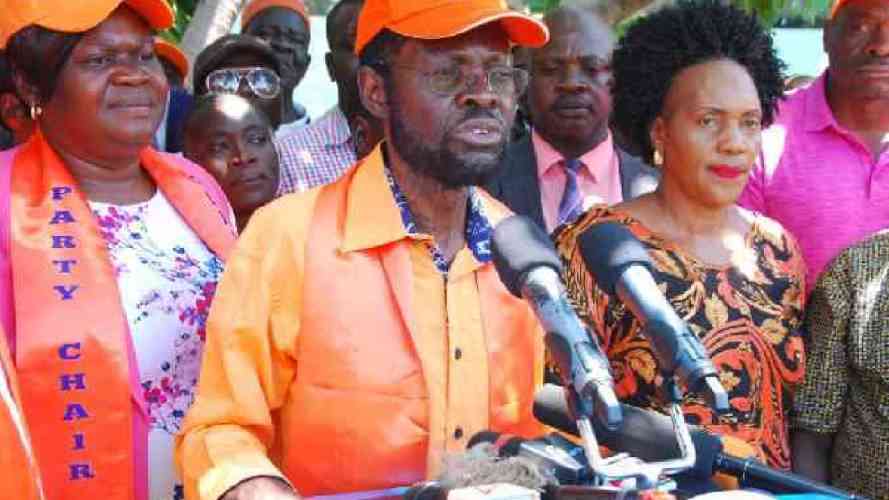Over the last twenty years, the phrase “Made in China” has become ubiquitous. Open an umbrella in London to cower from the rains, the label reads, “Made in China”. Buy a new belt in New York; “Made in China”. Today, nearly every toy from Western Europe to Sub-Saharan Africa is made in China.
Kenya has a lot to learn from China and Asia’s growing economies. And especially since manufacturing is a key pillar in the Big Four agenda, we must seek to borrow a big leaf from the Asian Tigers. When President Uhuru Kenyatta tours the largest nation in the world, he should have an open notebook and an open mind. Indeed, there is a reason President Kenyatta and Opposition leader Raila Odinga are going there together. The manufacturing sector is crucial for us all. For a thriving Kenya, manufacturing and industry need to grow and flourish like grass in a field, spread evenly across the whole country.
Uhuru’s handshake with Raila is an important cog in the nation’s future growth. So, from securing funding for the right projects (at the right rates), to hammering out the fairest and most appropriate trade deals in front of this superpower, it is paramount that a united Kenya is on show in Beijing.
Likewise, Kenya is not an impoverished nation running to China begging for shillings. We are the pride of the continent, growing daily and standing on our own two legs. Just look at the movement in the manufacturing sector. With local motor vehicle assembly finding its feet again, Kenya is showing we can compete with the big boys. Both Peugeot and Volkswagen have answered the call, setting up lines in Kenya, creating jobs, creating cars. Not “Made in China”, but “Made in Kenya”. These two giants, it is estimated, will have assembled close to 2,000 vehicles in Kenya this year.
Of course, we must never belittle the lower tech industries which provide a source of honourable income for families across our lands. The Leather Value Chain, a Common Manufacturing Unit at Kariokor Market, in the nation’s capital, is soon to be another source of great pride for Kenyan manufacturing. Once fully operational, this hub will give a burst of real energy into shoe making in Kenya. These initiatives are being replicated across the country in sectors; including the textile value chain. The Uhuru Market Centre of Excellence for the modern production of finished textile goods is just one famous example. But hubs and markets are parts of this greater picture.
To turn Kenya into a true focal point of innovation, a spring of progress and prosperity, deep foundations must be built. And those foundations stem from real and focused skills training, vocational apprenticeships and the wholesale reform of higher education.
Lately, we’ve seen emphasis on ICT skills and partnerships with some of the world’s largest and most influential companies, and a new generation of Kenyans learning the skills they will need to compete in the modern world.
When I travel outside Kenya there is a buzz which surrounds our country. With our entrepreneurial spirit, and the positive image of our nation which Uhuru and Raila are projecting around the world, more companies, countries and investors will believe in the Kenyan dream.
When the President and the leader of the opposition sit united opposite the world’s newest superpower; they do so from a position of strength. With our natural and human resources, and the ongoing investment in skills of the next generation, “Made in Kenya” will become a phrase just as accepted, and just as well known, as “Made in China.”
-The writer is a city investment banker and former Dagoretti South MP
 The Standard Group Plc is a
multi-media organization with investments in media platforms spanning newspaper
print operations, television, radio broadcasting, digital and online services. The
Standard Group is recognized as a leading multi-media house in Kenya with a key
influence in matters of national and international interest.
The Standard Group Plc is a
multi-media organization with investments in media platforms spanning newspaper
print operations, television, radio broadcasting, digital and online services. The
Standard Group is recognized as a leading multi-media house in Kenya with a key
influence in matters of national and international interest.
 The Standard Group Plc is a
multi-media organization with investments in media platforms spanning newspaper
print operations, television, radio broadcasting, digital and online services. The
Standard Group is recognized as a leading multi-media house in Kenya with a key
influence in matters of national and international interest.
The Standard Group Plc is a
multi-media organization with investments in media platforms spanning newspaper
print operations, television, radio broadcasting, digital and online services. The
Standard Group is recognized as a leading multi-media house in Kenya with a key
influence in matters of national and international interest.







